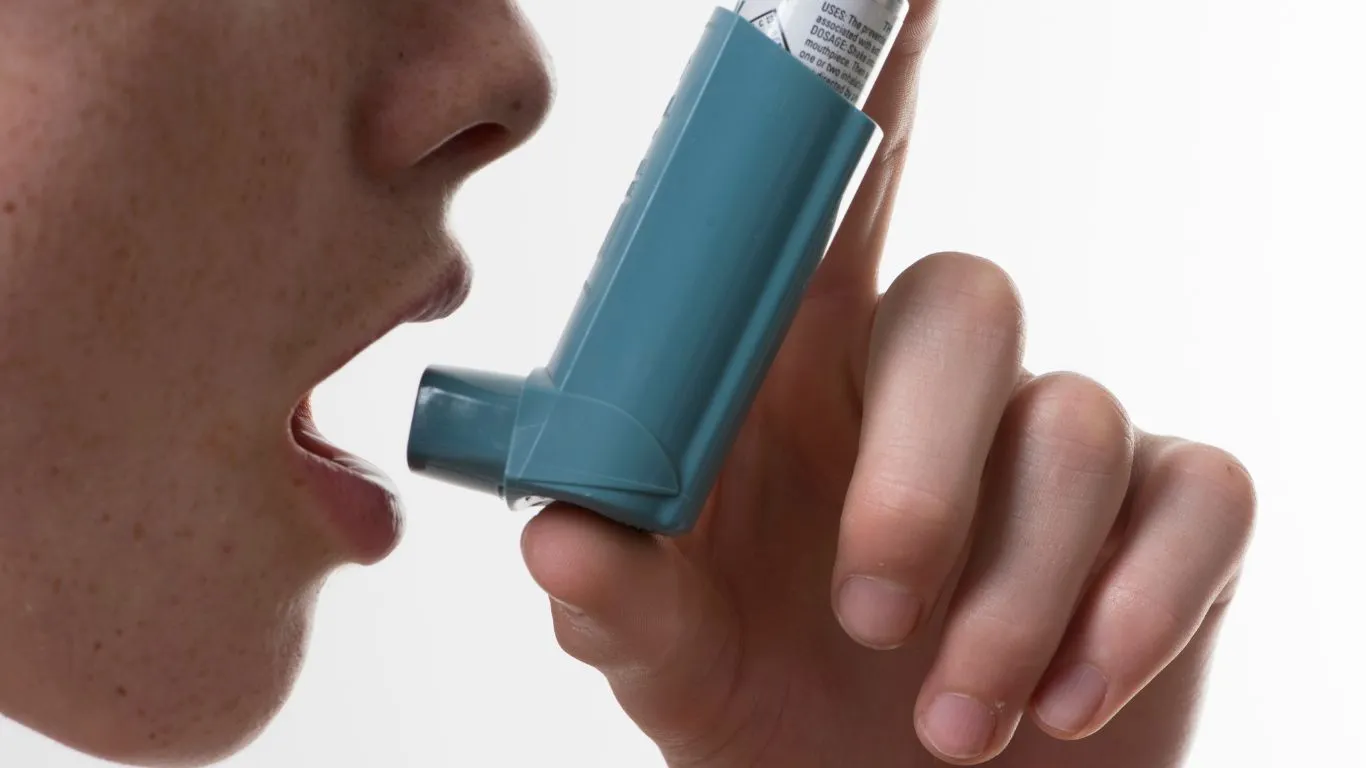Mastering Asthma Management: Simple Tips That Actually Work
When it comes to Mastering Asthma Management, it’s not just about following textbook protocols — it’s about blending real-world experience with proven strategies. As a Pulmonary Nurse who’s spent countless hours at the bedside, I’ve seen firsthand how the smallest tweaks can make the biggest difference in a patient’s quality of life. Whether you’re newly diagnosed, a seasoned warrior battling asthma for years, or a caregiver wanting to do right by someone you love, this guide is packed with insights that truly work — not just in theory, but in the chaos of real life.
Understanding Asthma: More Than Just Shortness of Breath

Most people think asthma is just about wheezing and breathlessness, but anyone who’s actually lived with it (or cared for someone who does) knows it’s way more complicated. It’s about the unpredictability — one minute you’re fine, the next you’re gasping for air. It’s about constantly balancing medications, triggers, and emotions.
From my clinical experience, asthma management is truly an art form. Every patient reacts differently, and that’s why understanding the basics is just the starting line.
What Exactly Happens During an Asthma Attack?
During an asthma attack, three major things happen inside the airways:
- Inflammation: The lining of the airways swells up, making them narrower.
- Bronchoconstriction: The muscles around the airways tighten like a noose.
- Increased Mucus Production: Your body produces thick mucus, clogging up those already narrow passages.
When I explain this to my patients, I always compare it to trying to breathe through a straw that’s partially clogged — scary, right? That visual alone helps patients take their condition seriously.
Why Mastering Asthma Management is a Game Changer

Managing asthma isn’t about reacting to attacks — it’s about preventing them from happening in the first place. I’ve seen patients transform their lives when they shift from “firefighting” to “strategic planning.”
The Emotional Toll of Poor Asthma Control
Asthma isn’t just a physical condition; it messes with your mind, too. Many of my patients have told me about the constant anxiety that comes with not knowing when the next flare-up will hit. I’ve sat beside people in hospital beds, holding their hands, seeing that fear in their eyes. It’s heartbreaking, but it’s also motivating — because better management means reclaiming control.
Key Benefits of Mastering Asthma Management:
- Reduced Hospital Visits: Fewer emergency trips and less time spent in crisis mode.
- Improved Daily Life: More energy for work, hobbies, and family.
- Peace of Mind: Less fear and more confidence in handling symptoms.
- Better Long-Term Health: Protecting your lungs from irreversible damage.
Common Triggers That Can Make or Break Your Asthma Control

If there’s one thing I’ve learned over the years, it’s that identifying and managing your personal asthma triggers is half the battle won. Triggers are sneaky — sometimes obvious, sometimes hidden in plain sight.
Top Triggers I Warn My Patients About:
- Environmental Allergens: Dust mites, pollen, mold, and pet dander.
- Air Pollutants: Smog, smoke, strong perfumes, chemical fumes.
- Respiratory Infections: A simple cold can spiral into a full-blown asthma crisis.
- Physical Activity: Exercise-induced asthma is more common than most think!
- Weather Changes: Sudden drops in temperature or humid air can be brutal on sensitive lungs.
- Stress: Emotional upsets can tighten airways just as fast as allergens can.
I’ll never forget one of my patients — a young college student — who kept ending up in the ER every few months. It wasn’t until we dug deep into her lifestyle that we found her triggers: her dorm’s mold problem and her intense anxiety during finals week. Once we tackled those, her asthma became so much more manageable.
Building Your Personalized Asthma Action Plan

One thing I always stress to my patients is that having a personalized asthma action plan isn’t optional — it’s essential. Think of it like a GPS for your lungs. Without it, you’re just guessing your way through good days and bad. With it, you’re ready for anything asthma throws your way.
In my years as a Pulmonary Nurse, I’ve seen firsthand how having a clear, easy-to-follow action plan can mean the difference between staying at home and rushing to the ER. And trust me, when you’re panicking and can’t breathe, having a step-by-step plan you can follow without thinking too hard is pure gold.
What Should an Asthma Action Plan Include?
- Daily Management: Which medications to take regularly, and how much.
- Recognizing Trouble: Early warning signs that your asthma might be flaring up.
- How to Respond: Specific steps to take when symptoms start getting worse.
- When to Seek Help: Clear guidelines for when it’s time to call your doctor or head to the ER.
I like to work with my patients to color-code their plans (Green, Yellow, Red zones). That way, even in the middle of an attack, it’s simple to know where you’re at and what to do next.
Mastering Asthma Management Through Medication

Medications are the backbone of asthma control, but honestly, it’s not just about having an inhaler somewhere in your bag — it’s about using it properly and consistently. I’ve lost count of how many times patients came into the clinic saying, “My meds aren’t working,” only to find out they were using their inhalers wrong or skipping doses.
Types of Asthma Medications You Should Know
- Controller Medications: These are your daily medications, like inhaled corticosteroids. They help prevent symptoms before they even start.
- Rescue Inhalers: Fast-acting relief for sudden symptoms. Think albuterol — the one you grab during an attack.
- Biologics: For folks with severe asthma, these advanced therapies target specific cells and pathways causing inflammation.
Pro Tip: Always rinse your mouth after using steroid inhalers! I’ve seen way too many patients deal with unnecessary thrush infections because they didn’t know this simple trick.
Proper Inhaler Technique Matters
Believe it or not, using an inhaler wrong is incredibly common. That’s why whenever I teach someone new to inhalers, I always go through a quick demo:
- Shake the inhaler well.
- Exhale fully before using it.
- Press and inhale slowly and deeply at the same time.
- Hold your breath for 10 seconds before exhaling.
It sounds easy, but in the heat of the moment, it’s easy to rush or miss a step. That’s why practicing technique when you’re calm is so important for truly Mastering Asthma Management.
Simple Breathing Exercises That Really Help

When patients hear “breathing exercises,” they sometimes roll their eyes at me. I get it — it sounds a little woo-woo. But breathing exercises are one of the most underrated tools for managing asthma, especially when anxiety is part of the problem (and it almost always is).
My Go-To Techniques I Teach Patients:
- Pursed-Lip Breathing: Inhale through your nose, then exhale slowly through pursed lips — like you’re blowing out a candle. This helps keep airways open longer.
- Diaphragmatic (Belly) Breathing: Focus on breathing deeply into your belly rather than shallowly into your chest. It’s a game changer for people who tend to panic-breathe during attacks.
I love coaching patients on these because I’ve watched them work miracles. One teen patient told me learning these techniques helped him avoid an ER visit during a soccer game — talk about a proud nurse moment!
When to Practice Breathing Exercises
- First thing in the morning to set the tone for the day.
- Before and after workouts.
- When feeling anxious or stressed.
- During early signs of an asthma flare-up.
Practicing these techniques regularly helps your body instinctively know what to do when breathing gets tough, so you’re not scrambling to remember steps when it matters most.
Lifestyle Hacks for Mastering Asthma Management

Living with asthma doesn’t mean living in fear. I always tell my patients — it’s about creating an environment and routine where your lungs can thrive. You’d be surprised how much a few small daily changes can make a huge difference over time.
Easy Lifestyle Changes That Make a Big Impact:
- Stay Active (Smartly): Regular exercise strengthens your lungs, but make sure to warm up and always have your rescue inhaler nearby.
- Watch What You Eat: Anti-inflammatory foods like leafy greens, berries, and fatty fish can support better breathing. I’ve seen patients notice real improvements after just a few weeks of cleaner eating.
- Manage Stress: Stress is a sneaky trigger. Incorporating mindfulness, yoga, or even just daily deep breathing can keep flare-ups at bay.
- Prioritize Sleep: Poor sleep weakens the immune system and makes asthma harder to control. Create a wind-down routine that helps you truly rest.
One thing I personally love suggesting is journaling asthma symptoms and triggers. It doesn’t have to be fancy — just a few lines a day can help spot patterns you might otherwise miss.
Trigger-Proofing Your Home and Work Space

Since you spend most of your life indoors, your surroundings play a major role in asthma control. It’s not about living in a bubble — it’s about making smart, proactive adjustments.
Top Ways to Make Your Environment Asthma-Friendly:
- Use Air Purifiers: Especially ones with HEPA filters. They catch tiny particles like pollen, dust, and pet dander.
- Clean Regularly: Vacuum with a HEPA vacuum, wash bedding in hot water weekly, and dust with damp cloths to avoid stirring up allergens.
- Mind the Mold: Bathrooms and basements are mold magnets. Dehumidifiers can work wonders!
- Choose Fragrance-Free: Scented candles, air fresheners, and even some cleaning products can be major irritants.
- Pet Considerations: If you have pets, bathing and brushing them often (preferably outside) can lower dander levels indoors. Resources like PetMD offer great tips.
One of my patients once realized her beloved new carpet was triggering her nightly asthma attacks. Switching to hardwood and adding washable rugs completely turned things around for her — no more 2 a.m. inhaler runs!
Traveling with Asthma: What You Need to Know
Just because you have asthma doesn’t mean you’re grounded! Traveling just requires a little extra planning to stay ahead of potential triggers.
My Best Travel Tips for Asthma Warriors:
- Pack Smart: Always bring extra medications, spacers, and a copy of your asthma action plan. I also recommend carrying a prescription note, just in case.
- Know the Climate: Cold, dry air or humid tropical weather can mess with your asthma. Prep accordingly!
- Pick Your Lodging Carefully: Hotels with non-smoking, hypoallergenic rooms are ideal. It’s not nitpicky — it’s essential.
- Plan for Emergencies: Research nearby hospitals and pharmacies before you go. It might sound overly cautious, but it brings real peace of mind.
I’ll never forget the relief on a patient’s face when they used their portable nebulizer on a flight during a minor flare — simply because they prepped properly. Traveling with asthma is 100% doable with the right mindset and tools!
Final Thoughts: Your Journey to Mastering Asthma Management
If there’s one thing I hope you take away from everything we’ve talked about, it’s this — you have so much more control over your asthma than you might think. With the right habits, the right support, and a little patience, it’s entirely possible to lead a vibrant, active, joyful life with asthma.
I’ve watched countless patients go from feeling terrified and trapped by their asthma to feeling empowered and free — and I know you can too. Mastering asthma management isn’t a quick fix; it’s a journey. But trust me, every step you take is absolutely worth it.
References
- National Institutes of Health (NIH)
- Health.com
- Centers for Disease Control and Prevention (CDC)
- American Lung Association
Disclaimer
This article is intended for informational purposes only and should not be considered a substitute for professional medical advice, diagnosis, or treatment. Always consult your healthcare provider with any questions you may have regarding a medical condition or treatment plan. Never disregard professional medical advice because of something you have read here.

Bianca Nala is a compassionate Nurse Practitioner with a strong background in primary and respiratory care. As a health writer for Healthusias.com, she combines her clinical expertise with a talent for clear, relatable storytelling to help readers better understand their health. Bianca focuses on topics like asthma, COPD, chronic cough, and overall lung health, aiming to simplify complex medical topics without losing accuracy. Whether she’s treating patients or writing articles, Bianca is driven by a single goal: making quality healthcare knowledge accessible to everyone.






